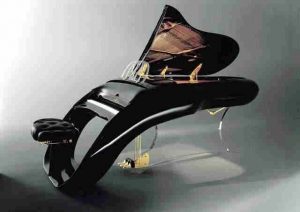“Design is not just what it looks like and feels like. Design is how it works” – Steve Jobs
Design education was formally established in the early 20th century, as an offshoot of Art and Architecture education. Contemporary movements in creative fields of that time, in conjunction with rapid industrialization, led artists, architects and thinkers to imagine a new area of engagement, which not only imbibed values such as expression, visualization and subjectivity from arts but also engaged with rational, scientific and systematic approaches as practiced in engineering and applied sciences. As a result of such experimentation, design as a legitimate subject of learning came into being. The Bauhaus in Germany spearheaded this initiative, resulting in the establishment of a robust and deep foundation that was to be carried forward well into the 21st century. Most design institutions of the 20th century broadly followed the Bauhaus model. In the period running up to World War II, the Bauhaus and it’s model became the single most important influence shaping what was, at that point, considered the need to humanize technology and give it artistic merit.

The Bauhaus, Walter Gropius (1925)
Image copyright Anne Quito & Michael Tabb – Quatrz (April 2020)
Post World War II, design came to be recognized as a way to improve commercial potential. Be it automobiles, consumer durables or personal accessories, a well designed and appealing product would automatically become unique and therefore sought after. In the rapidly increasing manufacturing sector, this became a way to differentiate products and give the user choice and thereby reap dividends for the sector. Design education, predictably, followed this paradigm and innovations were focused on adopting new technology, materials and aesthetics for products that would capture the user’s attention and therefore create commercial value.

Studebaker Champion, Raymond Loewy (1950)
Image courtesy The Verge

Schimmel Pegasus Grand Piano, Luigi Colani (1997)
Image courtesy: Schimmel Website
Coupled with world-wide political stability and consequent trade, the industrial economy was able to use design as an effective tool to promote business. Many interesting products came out of the post-war era and countries such as Germany, Italy and the United States led this field. In this period, design education evolved to become a part of the industrial complex and became an important arm of most consumer-centric industries. Thus, the role of design education as a pathway to a successful career in the industry was established.

Wega Music System Concept 51K, Harmut Esslinger (1976)

Corks, Jasper Morrison (2019)
Image copyright www.jaspermorrison.com
At the turn of the 21st Century the advent of Information Technology started influencing how products were made, communication handled and even how we went about our lives. With most manufacturing adopting IT enabled processes for both design and production, it became inevitable that there would be a paradigm shift in the way products are conceived, developed and manufactured. With computer aided design and manufacturing taking center stage, design education was also steered towards training professionals who could approach these requirements with a wider view that integrated multiple disciplines into a process that led to the best solution to a problem. The traditional need for a designer to create a system of products that fulfilled the requirements changed into one of creating a system of processes that led to creation of multiple end results. This was seen in the development of User Experience Design as a field, with designers diving deeper into the conception of products and integrating their methods right from the beginning. The need for designers to “lead” the product development process rather than merely being the “visualizers” of a technical development was greatly accelerated by the democratization brought about by Information Technology. While certain fields continued to stagnate in previous century paradigms, many new areas opened up for designers that enabled them to operate at different stages of the value chain. This in turn led to the acceptance of design as a profession beyond the “beautification” of objects, messages and technical advancements. In fact, designers were called in to create the message itself.
We are now at a stage in the evolution of the design profession where serious questions have to be asked of what design education should really encompass. We need to ask if the traditional approaches to teaching design are any more valid. We also need to ask whether the design professional of tomorrow will be seen in the same light as in the 20th Century or even the 21st Century. We need to ask if design as a subject is metamorphosing into a multitude of directions, thereby creating separate value chains for learning while retaining it’s core characteristics intact. And we need to ask what this means for institutions that are imparting design education and what should they look like in times to come.
In subsequent articles, I would like to attempt a layout of the design education landscape as I see it emerging. This landscape has evolved out of the many years of my experience as a design academic and the insights that I have gathered therein as well as in my professional practice. It is important to acknowledge the contributions of all the teachers who influenced my thoughts as well all those hundreds of students who brought with them their ideas of the subject and ultimately steered themselves into the profession, into engagements of their choice. I hope to do justice to my profession, both as an educator as well as a design thinker and design professional.
I would like to end this post with an enduring (but mostly forgotten) image of what the nascent world of graphical user interface looked like. This is the journey of what we take for granted today.

Graphical User Interface, Apple Mackintosh Computer (circa 1985)
Blog Article 1 – Sasi Menon
